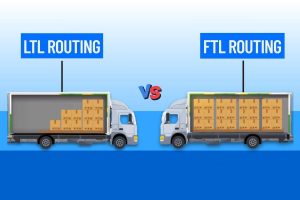Eliza. That was the name of the first chatbot ever developed in 1966 at MIT. It was used to answer simple queries using a simple algorithm of its decision-tree. Since then, it has evolved into different forms out of which the most common use we started seeing in 80’s and 90’s in automated telephone services. With further evolution, the chatbot has been adopted by many businesses to serve customers.
While it was able to provide many business benefits, it is still far from becoming a replacement for human service.
Today’s customers want immediate responses to their queries. And most of the time, those queries are repetitive from the vendor’s viewpoint. To serve those kinds of queries, bots are obviously more useful with the pre-fed response to such known queries. And if the customer is looking for any specific information, it acts like an online search for them and serves the purpose. The customer quickly finds what they want and the vendor provides it without a need for any human intervention.
A glimpse of today’s chatbots
As long as the information exchange is concerned, chatbots prove to be much useful. But as the complexity rises, it becomes difficult for an average bot to decipher the linguistic connotations. This is true only in businesses that use bots for assisting their customer support activities.
In other areas, the comprehension power of the modern AI-based chatbots is improving and serving a vast section of society. They are not only able to answer just point-to-point queries but have gone even a few steps further to the level of empathizing with the customers.
One such example of a highly evolved chatbot is Wysa. Wysa has developed a chatbot that is able to “feel” what its user is going through and aims to provide comfort in their difficult times. It has quickly gained popularity in the wellness sector reaching a vast audience of over 2.5 million people worldwide.
But the reason behind their success is simple. They were able to evolve their product only because it is their core offering to their clients. The whole company is built around this product through which they are able to serve millions of customers.
But for the companies belonging to other sectors, this is not the case. The chatbot is used only as an accessory to augment their customer service efforts. Hence, they cannot be as fully invested as companies like Wysa.
A common problem with most Chatbots today
Companies usually spend 6 to 12% of their revenues on customer support. That is quite high for a company that has to consider other costs too like product development or professional service costs. And out of that 6 to 12% of the budget, most of the revenue goes into customer support staff salary and operational cost.
Hence, there’s only a meager amount left for them to spend on developing a personalized chatbot. The amount they pay to the chatbot developing companies is not enough for them to give a dedicated focus to the business.
Those external chatbot development companies lack the domain knowledge and hence, they work with a subject matter expert of the host business. Through this, they are able to integrate most of the knowledge required for giving support to the customers. Yet, there’s hardly any customer experience specialist involved in this process.
Customer experience strategies extend much beyond the common business operational knowledge. The chatbot with an embedded CX strategy must be able to:
- Make personal connect with the customer
- Anticipate customer’s anxiety level.
- Answer their business query.
- Appease a frustrated customer
- Escalate the issue to the right person when needed.
So, the problem with most bots today is clear. All the knowledge and expertise needed to develop a state-of-art bot are already present. But still, companies are not able to leverage them and orchestrate well enough to develop the required support bot. The reason being, they simply don’t have enough time or money nor they consider this as their top priority.
Hence, the customer experience with such unevolved bots is naturally poor. When the customer queries go off the laid path for which there’s no algo defined, the bot goes clueless and behaves erratically. In such situations, it doesn’t even take a second for the customer to feel ignored and undervalued.
And since most of the companies are still operating from a traditional mindset that equates growth with the acquisition, enhancement in chatbots takes a backseat. They are mostly focused on product-led growth and hence, their most spending of time and money goes into product research and development.
The way forward
Companies must realize that with the progress in technology and easier accessibility, a new paradigm is dawning upon the world. Customers are getting more sensitive towards the service they get from the companies than its core product.
In fact, a walker study has already established that by last year, 2020, customer experience would overtake price and product as the key brand differentiator.
And this is an undeniable truth. With the surge of companies adopting customer experience and becoming customer-centric organizations, we can clearly see the changing landscape of modern businesses.
But there’s a core reason for such a change that is worth noticing here. We all know that within a few decades, most of the jobs would be automated and AI would eat the world. That fact daunts most people because of the fear of losing their jobs. But we must trust that this challenge would come with its own solutions. The government would find other ways to keep the economy running by introducing benefits like universal basic income or something similar.
The main point here to understand is that AI will always serve humanity. It will never over-power it (unlike the popular sci-fi movies that show otherwise). And since the transition has already begun, it is us, or mostly the customer experience professionals, who are ingraining these customer-centric values to the developing AIs of today.
Conclusion
To finally answer the main question of this blog, it is both yes and no. Yes because we are in the transition phase towards building highly evolved AI service bots that can create a great customer experience.
But we must acknowledge that we are not there yet. There is still a lot of development needed in today’s chatbots for them to be at par with humans.
Yet, that doesn’t mean you should discard it and resort back to your past of manual support. Rather, higher investment in CX strategies and developing customer service products around it is the way forward to ensure the long-term sustainability of your business. And to back your decision, there’s enough evidence present in this blog and beyond to get you thinking in this direction.












